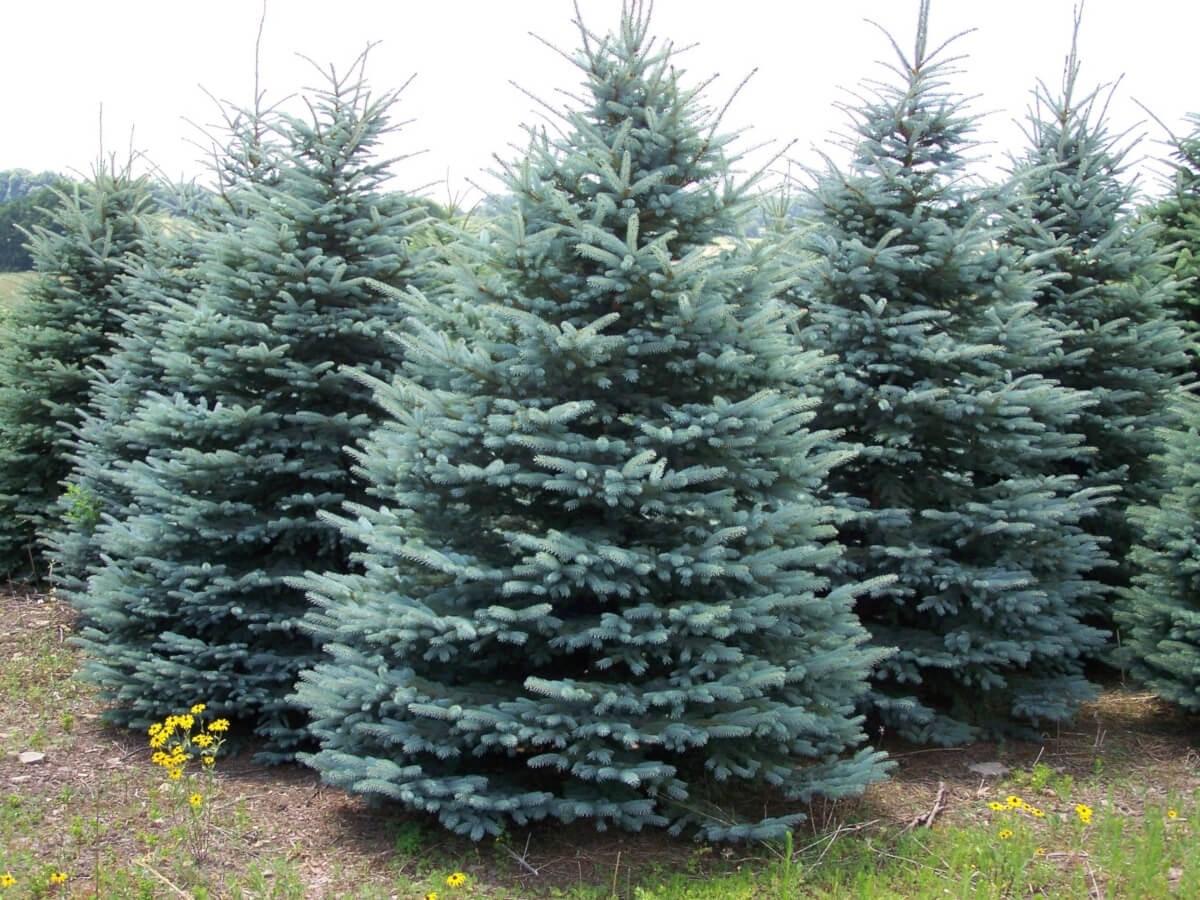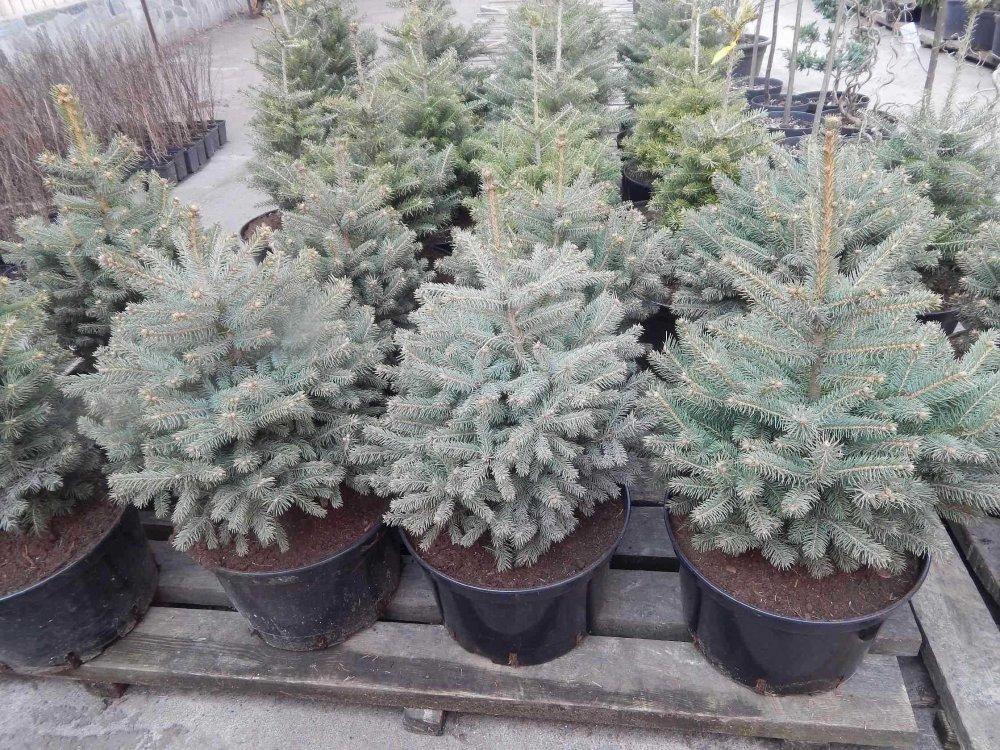Content
Keibab spruce is an evergreen tree of regular shape. A special feature of the breed is its lush blue needles. The elegant tree is used as an element in the design of personal gardens, city parks and public gardens.

In its homeland, North America, the Keibab spruce can live for more than half a century; in Russia, the age of the tree does not exceed 60 years
History of origin
The name of the prickly spruce Picea pungens glauca Arizona Kaibab (Picea pungens glauca Arizona Keibab) combines Latin and English words. The translation of the name sounds like “gray spruce from the town of Keybab in Arizona.” Most often the plant is called briefly - Kebab. The homeland of prickly spruce with blue needles is North America.
Description of blue spruce kebab with photo
In Russia, Keibab spruce is grown as an ornamental crop. The tree has long needles of an unusual bluish-blue hue, but sometimes there are specimens that are almost green. The ovoid cones when mature resemble light brown rosebuds. The effect occurs due to the fact that the scales open over time.Keibab spruce has a superficial root system that grows in breadth.

The tree has a perfectly symmetrical cone shape
Kebab spruce height
The height of the Kebab spruce, growing in Arizona, can reach 45 m. In Europe, the size of the tree, as a rule, does not exceed 10 m, while the crown diameter ranges from 3 to 8 m. In the first years, the exotic spruce grows slowly, adding 10- 15 cm. And at ten years it stretches up only 3 m.
Frost resistance
Blue spruce Keibab has a high level of frost resistance. The tree can withstand temperatures down to -40 0C. In addition, coniferous species are undemanding to environmental conditions and tolerate drought and air pollution well.
Advantages and disadvantages
An evergreen tree with needles of a unique color has pronounced decorative qualities.

The substances emitted by the Keibab blue spruce cleanse the air of dust and other harmful impurities.
Pros:
- spruce is a worthy decoration for any site;
- the breed produces powerful shoots;
- the plant is characterized by high frost resistance and ease of care;
- Blue Kebab can be used as a New Year (Christmas) tree.
Minuses:
- a lot of space is needed for successful cultivation of the breed;
- the shadow created by trees blocks other plants from sunlight;
- Spruce roots greatly deplete the soil, taking away nutrients.
Landing rules
The choice of location is of decisive importance when cultivating the Keibab breed.
The site requirements are as follows:
- Sufficient lighting. A tree grown in the shade loses the blue color of its needles and grows green.
- Space. Keibab's spreading roots suppress nearby crops and can damage the foundation of a house.
- Fertile soil with a high level of acidity. Optimal soil composition: a mixture of soil, peat and river sand.
- Well drained area.
Agrotechnicians advise planning planting for April. Blue spruce seedlings are sold in specialized stores or botanical nurseries. When purchasing, you should carefully examine the roots of the selected specimens. They should be alive with new shoots.
The landing algorithm is as follows:
- Dig a hole with a depth and a diameter of 60 cm. At the bottom, create a drainage layer of expanded clay (pebbles, broken brick) 20 cm high.
- The seedling is placed vertically. A layer of soil is poured on top.
Finally, the earth is lightly compacted and a tree trunk circle is formed. The tree is watered abundantly. After an hour, the area near the trunk is mulched with sawdust or wood chips.

In order for the tree to adapt more quickly, you should choose seedlings 3-4 years old
Features of care
Despite the refinement of the breed, caring for the Arizona conifer is simple. To successfully cultivate a tree, a number of agrotechnical measures are carried out:
- Watering. In the first year after planting, the spruce is irrigated several times a week. When the conifer grows a root system, it is watered only in dry, hot summers.
- Fertilizer. As a top dressing in the spring, use nitroammophoska (30 g) or a composition intended for coniferous species. In October, the plant is fertilized with a phosphorus-potassium complex.
- Weeding.
- Mulching the tree trunk circle.
- Pruning for the purpose of modeling the shape and sanitary treatment (elimination of damaged, dry branches).
In the first 3-4 years in a temperate climate zone and when grown in the northern regions, the tree is covered with agrofibre before winter. A grown and strengthened spruce tree does not require protection.
Techniques for caring for the Kebab variety are presented in the video:
Reproduction
Blue spruce Keibab is propagated in three ways. The simplest option is sowing. But experts warn that specimens planted in this way may not reproduce the varietal qualities of the mother plant.
A more widely used method of propagating conifers is cuttings. When spruce is spread by planting shoots, varietal characteristics are completely preserved. To carry out cuttings, take branches 6-10 cm long, tearing them off along with part of the bark of the mother specimen. The needles are removed from the shoot, treated with a growth stimulant and planted in a mini-greenhouse. Rooting occurs within 2-4 months. After which the seedling can be moved to a permanent place. Having experience in carrying out gardening work allows you to propagate Keibab by grafting.
Diseases and pests
Prickly spruce Keibab is resistant to infections and pests. The cause of the disease is usually a violation of the rules of agricultural technology. The biggest enemy of conifers is aphids.

Having settled on young shoots, the insect sucks out the juices of the plant, as a result the needles begin to turn yellow and crumble
Similar symptoms are observed when Arizona spruce is infected with gall midge. If you find pests, you must take immediate action:
- cut off damaged branches;
- carry out treatment with an insecticidal preparation - Konfidor, Aktara.
Sometimes trees are affected by diseases such as brown spot and fusarium. In order to combat the infection, they are treated with a fungicide - Topaz, Ordan. Spraying with the drug is organized once every ten days. If the disease affects the root system, then it is impossible to save Keibab.
Application in landscape design
Arizona Kebab is widely used in landscape design. Most often, trees are planted along a path in the form of an alley. Blue spruce trees look advantageous as a backdrop for low-growing trees and shrubs with rich green, red or purple foliage. On a personal plot, an elegant plant can be a single copy, complementing the alpine hill.
A group of conifers fences off the seating area in the garden and creates a pleasant shade in the summer

The silver spruce growing near the house can be used as a New Year tree
Conclusion
Blue spruce Keibab can be a wonderful decoration for the local area. Good care is a guarantee of the high decorative qualities of the tree. The rich blue color of the needles attracts everyone's attention and makes Keibab stand out among other conifers.










